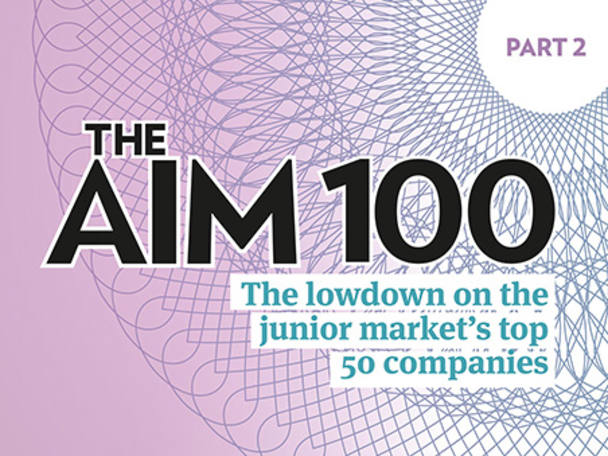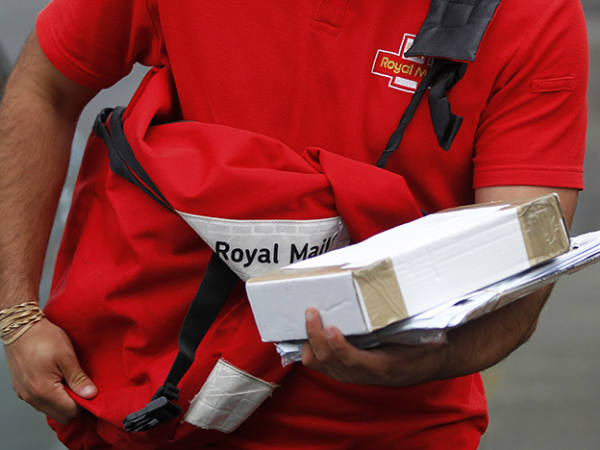We continue our review of the junior market’s largest companies
20. NICHOLS
Chancellor George Osborne’s announcement of a sugar levy on soft drinks in 2018 in his recent Budget knocked all related stocks on the day. But Vimto-maker Nichols (NICL) was particularly hard hit, falling as much as 11 per cent. Those losses have been recovered now, maybe in part because the tax is some way off but also because the company quickly highlighted that it had, in 2015 alone, reduced total sugar usage by 8 per cent year on year. Regular Vimto would, however, trigger the higher rate of the tax in its current state.
International sales may well now come into sharp focus for investors, given that exports will not trigger the levy. The company makes roughly a quarter of sales overseas, including about 11 per cent in the Middle East and 8 per cent in Africa. Yemen, an important market for the group, has proved troublesome as sending goods there amid the ongoing civil war has been difficult.
It might also be wise for anyone backing the company, and indeed others like it, to see if spending increases. Reformulating a drink so it avoids the tax is unlikely to be as simple as just removing sugar. Replacement ingredients may need to be found or a third-party hired to reformulate products. Hold. BG
19. CVS GROUP
For anyone who’s noticed the meteoric rise of groups such as Pets at Home, the fact that shares in veterinary practice owner CVS (CVS) have nearly quadrupled since 2013 will be hardly surprising. It’s a highly acquisitive company – it has closed 42 deals in the first half of the current financial year alone – and the top line has soared as a result. In fact, turnover has now exceeded £100m for the first time in the group’s reporting history.
However, all of this deal-making has driven the company’s debt way up – something investors should perhaps be wary of. Net debt now represents 204 per cent of the group’s net asset value, although underlying growth is also said to be strong, too, with sales up 3 per cent in the first half on this basis.
For the remainder of the year, chairman Richard Connell says he has “confidence” that the group will meet expectations. Two more deals – including eight more surgeries – have been snapped up post-period-end, while underlying sales momentum has also improved into 2016. Easier comparative figures should also help the group achieve market forecasts this year. However, in our view the shares’ price tag clearly reflects this growth spurt. Hold. HR
18. REDDE
The conditions are right for accident services provider Redde (REDD) to flourish: cheaper motor insurance premiums, lower petrol prices and more cars than ever on the road. As the number of road traffic accidents have increased, Redde has shifted its focus to higher-margin credit hires. When a road user becomes the victim of an accident through no fault of their own Redde provides them with a replacement vehicle and repairs, recouping the money from the guilty party’s insurer. This is an alternative to the traditional direct hire the group offers to a driver who has the service as part of their policy.
This new strategy is sensible given that direct hire volumes are falling, while credit hires rose 9 per cent during the first half of the year. Management has said that volumes continued to grow during the latter part of the year. Analysts at house broker N+1 Singer upgraded their full-year forecasts for revenue and pre-tax profits following the impressive first-half results. The shares are trading on 17 times consensus forward earnings, slightly below their three-year historic average of 16. However, the structural drivers of growth remain and the shares deliver good income, with a forecast yield of 6 per cent this year. Buy. EP
17. BOOHOO.COM
Could it be possible that the market is starting to trust online fashion retailer Boohoo.com (BOO)? The group drew inevitable comparison with its behemoth cousin Asos when it debuted on the London market, but it didn’t take long for the company to disappoint investors. Having floated in late 2014, a profit warning in January 2015 sent the shares plummeting.
It’s proving to be a long road back to the top, but recent momentum in the group’s share price suggests not all is lost. Sales are not Boohoo’s problem – they rose 45 per cent during the four months ended 31 December 2015. Instead, margins are the sticking point. They fell 300 basis points over the course of 2015 as the company slashed prices to keep up with competitors. Encouragingly, managers saw fit to reduce marketing spend in order to stop margins falling further. Regardless, more customers are flocking to the site. Boohoo reported a 34 per cent increase in what it calls ‘active’ customers (those who have made a purchase in the past 12 months) during the same four-month period. But, in short, the shares’ lofty valuation makes them a perennial hold. HR
16. SECURE TRUST BANK
Secure Trust Bank (STB) trades at 3.6 times its book value, far above rivals such as One Savings Bank and Virgin Money, according to Bloomberg consensus data. This is despite the shares falling by almost a fifth since hitting a 12-month high in December. The downturn in the share price could be due to management’s potential plans to enter the buy-to-let market later this year, in addition to the residential property market. However, chief executive Paul Lynam is confident that the shortage in housing will continue to drive demand for mortgage lending, despite the introduction of a higher rate of stamp duty for buy-to-let landlords.
The challenger bank is already generating impressive returns from lending to residential property investors and has started to expand beyond London and the south-east. Last year the group’s loan book almost trebled to £368m. The bank has reduced its risk profile by selling its Everyday Loans business to Non-Standard Finance (NSF) last year. The group’s leverage ratio is towards the bottom of the sector, while analysts at Canaccord Genuity expect the dividend yield to rise to 3.1 per cent this year. However, trading at such a high price to book value, we think much of the upside is priced in. Back to hold. EP
15. VINACAPITAL VIETNAM OPPORTUNITY FUND
This will be VinaCapital Vietnam Opportunity Fund's (VOF) last appearance in our Aim 100 review. At the end of March the shares moved to the main market and at the same time VinaCapital moved its domicile from the Cayman Islands to Guernsey. Management hopes this will open up the company to the broadest possible range of investors, many of whom it says were unable to buy shares admitted to trading on Aim or domiciled in the Cayman Islands. The shares have been stubbornly trading at a discount, and the share price was trading at a 16 per cent discount to NAV at the end of December.
The opportunity fund is a closed-ended strategy, which invests in stocks, real estate and private equity in Vietnam and surrounding countries. Stocks make up around half the fund’s investments and, unsurprisingly, fell by 0.4 per cent in value during the latter part of 2015.
The first months of 2016 have brought a similarly sluggish performance, partly due to economic uncertainty surrounding the change of political leadership in Vietnam. However, management is confident the passage of free trade agreements such as the Trans-Pacific Partnership will facilitate trade and falling inflation, which it reckons should support the continuing relocation of supply chains within Asia. However, we think it is too early to call an emerging market recovery just yet. Hold. EP
14. 4D PHARMA
4D Pharma (DDDD) has broken into the Aim 100 in style, having experienced close to a 1,000 per cent rise in its share price since listing in February 2014. The group operates in the field of biotherapeutics – a novel area of science that aims to develop new drugs using live bacteria. 4D owns a patented platform, MicroRX, which identifies bacteria with the potential to have a positive therapeutic effect.
The group now has 15 potential drugs in its pipeline and recently started early-stage human trials of a treatment for irritable bowel syndrome. It also has approval to start another trial in paediatric Crohn’s disease. In order to develop the number of drugs necessary to supply a clinical trial, 4D has recently acquired the production assets of Instituto Biomar, a contract research organisation based in Spain.
4D is yet to get off the blocks in terms of revenue generation and a ramp-up in research and development costs associated with the clinical trials has also led to widening losses. But with strong institutional investor backing, the group had no problems in raising a further £64.8m in the year and remains in a healthy cash position. Hold. MB
13. MULBERRY
Mulberry (MLB) is another retailer in recovery. The luxury handbag maker made one of its biggest mistakes when it appointed chief executive Bruno Guillon to transform Mulberry into a top-tier luxury brand. Mr Guillon’s plans – which largely only included inflating prices – alienated once-loyal Mulberry customers who were unwilling to shell out more than £1,000 for the group’s new lines. It also led to the resignation of the company’s creative director – a crucial position in a fashion business.
The good news is that Mr Guillon has also been consigned to the history books, and his replacement, Thierry Andretta, and new creative head Johnny Coca appear to be working well together. Neil James Ritchie will also succeed current finance director Roger Mather in May this year. Preliminary results aren’t due until June, but recent momentum in the share price suggests the market is optimistic. The shares’ forward rating – around 197 times 2016 earnings – is astronomical, though, and has been for some time. That means any further recovery potential looks largely priced in from where we’re standing. That said, any long-time investors would do well to keep holding on to those shares for now. Hold. HR
12. EMIS (EMIS)
Growing numbers of UK healthcare providers are slashing costs, boosting efficiency and improving quality of care by sharing patient information using software from Emis (EMIS). The ‘connected healthcare’ specialist’s offerings are used by 55 per cent of the nation’s GPs, and it signed over £10m in child, community and mental health contracts in 2015. Moreover, its dispensary management system commands a 36 per cent share of the community pharmacy market, and a recent deal with Lloyds Pharmacy spanning up to 1,800 outlets will boost that proportion to nearly 50 per cent. Brisk trading and market share gains drove adjusted operating profits up 12 per cent to about £37m in 2015.
The sore spot is the secondary care business, which won fewer hospital contracts than expected in 2015. However, new management and recent restructuring promise to underpin a rally there. EMIS has delivered average organic sales growth of 11 per cent over the past five years, and its directors are targeting double-digit growth in organic pre-tax profits going forward. Its shares have roughly quadrupled in value since floating in 2010, and now trade at 21 times broker Numis’s forecast EPS for 2016. That rating balances the group’s broad-based growth and the prospect of acquisitions with its challenges in secondary care. Hold. TM
11. CLINIGEN
Two major acquisitions completed towards the end of 2015 have transformed speciality pharma group Clinigen (CLIN). Idis and Link Healthcare, acquired in April and October respectively, contributed £32m of revenue in the first half of the group’s financial year. Accompanied by strong organic growth in the speciality pharma business, which buys badly managed drugs from big pharmaceutical companies and gives them a new lease of life, underlying trading is looking good.
But costs associated with the acquisitions and enduring integration expenses have cut a rather large hole in the bottom line, and profitability in 2015 took a hit as a result. This has resulted in wavering investor sentiment, and the share price has been on a bumpy journey recently.
The long-term outlook, however, remains bright. The acquisitions have helped to form a better mix of services and products, reducing the group’s reliance on its lumpy clinical trials business, which previously concerned shareholders. It has also given Clinigen access to new lucrative markets across Asia, Africa and Australasia. The newly expanded group looks exciting, but with the risky integration process still under way we think it is too early to re-initiate a buy recommendation. Hold. MB
For the full run down click on the links below:








